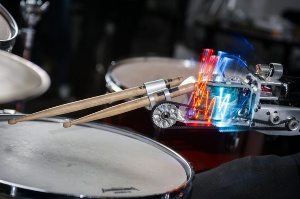
Implant Teaches the Brain to Cure Tinnitus
According to the National Institute of Deafness and other Hearing Disorders (NIDCD) tinnitus affects 12.3 percent of men and around 14 percent of women over age 65 in the United States. The disorder causes a chronic noise or ringing in the ears. U.S. company MicroTransponder has developed an implant that can train the brain to cure tinnitus, reports GizMag. The user listens to computer-generated sounds via headphones to trigger the tinnitus. The implant simultaneously targets the vagus nerve, transmitting small pulses which trigger the release of chemicals within the brain. These chemicals stimulate the brain to reconfigure itself, reducing the tinnitus symptoms.
An Invisibility Cloak Made using Light
We’ve all had a moment when we wished we could become invisible, that wish could soon become a reality thanks to researchers at Britain’s Cambridge University. According to a report in the journal Nature Communications, the new technique uses unfocused lasers that produce billions of minute needles of light that draw together long strands of gold nano particles, which are then connected electrically. When these strands are stacked on top of each other to make larger pieces, they form a metamaterial that interacts with light to make things appear invisible. The scientists at Cambridge say that if the process is upscaled, it could lead to the development of an invisibility cloak.
Robot Learns to Walk with Broken Leg
According to ExtremeTech, an alliance of researchers from university in Wyoming and Paris has developed a robot that can walk, despite having a broken leg. This could be useful for robots that are operating in remote, rough terrains. The team used a six-legged robot with 18 motors. The combination of movements of the motors means the robot had 13,000 different gates, which presented somewhat of a challenge for collecting the data on walking patterns. Once the data was collected, it was ordered by the relative limb positions during walking. Though the robot still has relay on trial and error to come up with the most suitable gait, because it already has the data, the process takes only a few seconds, which is much quicker than it would be for a robot operating with trial and error alone.
Image credit: Symptomsacadamy.com







